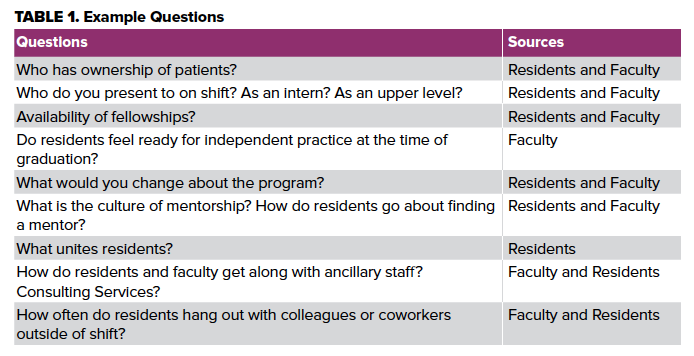How can you put your best foot forward during residency interviews in the era of COVID-19?
COVID-19 has led to a change in the practice of medicine and medical education. To avoid spread of disease, there is a focus on minimizing in-person contact. Restrictions have been placed on the number of people in groups and in the same area. In the field of emergency medicine, applicants and interviewers are the frontlines of health care seeing the COVID patients.
Normal applications for fellowships or residency consist of meeting the department and participating in different interviews with various members of the team. The goal is to find out your best fit and the best fit for the different programs. Generally, applicants or candidates use the in-person interview to demonstrate their personality and their strengths. However, AAMC released a statement on May 7 recommending all interviews for fellowship and residency to be virtual interviews.
How can you put your best foot forward? Virtual interviews are a change from traditional interviews, but they have been used successfully in the past for residency and fellowship positions.2,3,5 There are many ways to optimize your success; invest in the time to determine which work best for you.
Preparation
Before interview day, download the application used by that residency program and run through a mock interview to ensure the technology works with your computer. Focus on the functionality of your camera; if the camera included on your computer is low quality, consider using an external webcam. Evaluate the performance of your speakers and sound system and consider utilizing headphones for better sound quality and to prevent feedback or echoing. If it is an application you have used before, ensure that your display name is a professional version of your actual name.
Record the mock interview to try to observe your unconscious habits, as they could become distractions. Examples include adjusting your glasses, playing with your hair, stroking your beard/mustache, chewing on your nails etc. If you see yourself doing this in the recorded mock interview you will be able to make a conscious effort to avoid this in the future. Having a friend or mentor watch the interview will give you additional perspective on any areas that can be improved.
Spend some time before your first interview learning how to optimize your internet connection and quality of the picture- explore the options available on the application you will be using. Close other programs on your computer that might make it run slower. Turn off other devices using the internet, or at least turn off their Wi-Fi connection temporarily. Find a place with a strong Wi-Fi signal, close to the router, to maximize connectivity, or consider utilizing a wired connection if that is a possibility. All of these steps should help to avoid freezing your video or audio signal.
Just as you would prepare for any other interview, develop answers to questions you think will be asked. Explore the program’s website and watch their promotional videos to become familiar with the institution. Have a list of questions that you want answered.
One of the difficulties with adjusting to remote interviewing is to get a general feel for a place, so try to include questions that could assist in this. Some examples are to ask about mentoring, examples of activities residents do together for fun, or asking residents how comfortable they are contacting their attendings while not at work. See Figure 1 for other example questions. If the option is offered, strongly consider contacting residents after the interview to try to replace the social interactions missing from virtual interviews.

Environment
The following are some ways to enhance the quality of the interview during the interview itself.
- Make sure you have a neutral light-colored background without a direct light source behind you. The light source can cause unflattering shadowing or make it difficult for the interviewer to see your face. A warm light source positioned just off to the side but shining on your face is generally the most flattering.
- A neutral background will bring you to the foreground. Try to avoid images or artwork in the background. The images and artwork, although potentially a key to your personality, can detract from what you are saying.
- There are other distractions to try to avoid during your interviews. Pets are a great example; barking, walking across the screen, or walking across the background draws attention away from what you’re saying. Some ideas are to have someone else keep an eye on pets, children, etc., in a different area, or investigate other methods of keeping the room where you’re interviewing quiet and interruption-free. If allowed at your institution, finding an empty classroom or office on campus may provide the quiet environment you need.
Appearance
Just like an in-person interview, dress for success. If in person you would wear a suit and tie or formal dress, wear the same thing during the interview. Groom your hair, beard, etc., just as you would for an in-person interview. Although what you are wearing on the bottom may not be shown on video, dressing professionally may serve as an unconscious reminder that this is an interview and to take it seriously. There have been multiple examples of virtual meetings where participants did not realize how much of themselves was visible on screen.
Try to look directly at the camera when you are speaking instead of looking at the screen (watch your recorded practice interview to see how both options come across). Just as meeting someone’s eyes during an in-person interview, looking at the camera exudes confidence. Looking at the screen may also distract you from what you are saying or make you self-conscious. It can be helpful to look at the interviewer when they are speaking to pick up on non-verbal clues during the interview.
It’s harder to project your personality through a virtual interview, and easier to come across as low energy which can be interpreted as uninterested. If sitting, make sure you are sitting upright not lounging on a sofa or bed. Consider arranging your laptop on an elevated surface so that you are standing during the interview. Practice with either option before the actual interview, watching the recorded interview for which option shows off your personality the best without creating distractions.
Keep your phone away from the computer during the interview, in addition to removing anything, such as an apple watch, that lights up or makes noise that could possibly distract you from the conversation. Just before the interview starts, make sure you turn off all alerts or pop-up windows on your computer. In a one-on-one interview especially, it is obvious if you get distracted from the conversation.
Closing Remarks
Although interviewing virtually is a change from the usual, hopefully these tips will assist in preparation and success during interview day. If you’re feeling stressed about the change, consider considerable time (>$3000 per applicant4) and money saved as you no longer have to travel across the country, balancing completing clinical requirements with time for interviews.
References
- Day RW, Taylor BM, Bednarski B, et al. Virtual Interviews for Surgical Training Program Applicants During COVID-19: Lessons Learned and Recommendations [published online ahead of print, 2020 May 20]. Ann Surg. 2020;10.1097/SLA.0000000000004064.
- Healy WL, Bedair H. Videoconference Interviews for an Adult Reconstruction Fellowship: Lessons Learned. J Bone Joint Surg Am. 2017;99(21):e114.
- Jones RE, Abdelfattah KR. Virtual Interviews in the Era of COVID-19: A Primer for Applicants. J Surg Educ. 2020;77(4):733-734.
- Pourmand A, Lee H, Fair M, Maloney K, Caggiula A. Feasibility and Usability of Tele-interview for Medical Residency Interview. West J Emerg Med. 2018;19(1):80-86.
- Vadi MG, Malkin MR, Lenart J, Stier GR, Gatling JW, Applegate RL 2nd. Comparison of web-based and face-to-face interviews for application to an anesthesiology training program: a pilot study. Int J Med Educ. 2016;7:102-108.
- Vining CC, Eng OS, Hogg ME, et al. Virtual Surgical Fellowship Recruitment During COVID-19 and Its Implications for Resident/Fellow Recruitment in the Future [published online ahead of print, 2020 May 18]. Ann Surg Oncol. 2020;1-5.



